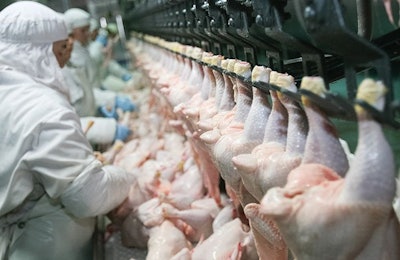
Poultry producers and processors are fast-tracking robot and automation technologies to help reduce the risk of exposure among workers during COVID-19 and potential future pandemics.
“We’re trying to understand what the trends and challenges for agriculture and food production will be in a post-COVID-19 world,” explained Robert Henry, director of the University of Queensland's Alliance for Agriculture and Food Innovation and author of a recent paper on innovations in agriculture and the food supply in response to COVID-19.
Trend accelerated
Poultry and meat processors were already moving towards the use of automation before COVID-19. That trend has accelerated given the large number of facilities that had to temporarily stop or slow operations to prevent the spread of the virus.
“We need to design meat processing facilities so that there are fewer people close together and there is appropriate distancing,” said Henry. “It’s inevitable that a lot of facilities will turn to automation, which could also improve the quality of the product produced.”
Robots and other automated technologies also offer improved efficiencies, reliability and working conditions when used in poultry or other food processing facilities. Automated deboning machines use sensors to determine the size and dimension of a carcass, resulting in more precise measurements and a higher yield.
“In poultry, there is lots of automation already,” he added. “Because of this, poultry is where we should expect to see the greatest innovation in automation and robotic technologies compared to beef or pork.”
How will future pandemics be transmitted?
Although there is no evidence that COVID-19 can be spread through contact with poultry, Henry says that the industry needs to be prepared for the chance that future pandemics may be transmitted through food.
“It’s a risk management strategy going forward because I think we’ll always be thinking about the possibility of the next pandemic,” Henry said.
“Planning for pandemics in the future, we might have an organism that can be transmitted through food. That’s an additional reason to think about separating people from the product.”
View our continuing coverage of the coronavirus/COVID-19 pandemic.
Like what you just read? Sign up now for free to receive the Poultry Future Newsletter.


















